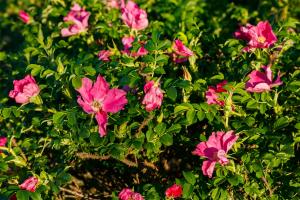When to Plant Russian Sage
Looking for an easy-to-grow perennial that adds a beautiful pop of color to your landscape? Russian sage might be just what you need. With its striking silvery leaves and delicate blue-purple flowers, this plant is a favorite of many gardeners. But when is the best time to plant Russian sage? Let's take a closer look.
Understanding Russian Sage
Before we dive into planting Russian sage, it's important to understand a few things about this plant. First, despite its name, Russian sage is not actually native to Russia. It's a member of the mint family and hails from central Asia.
Russian sage is a hardy plant that can withstand hot, dry conditions and even some frost. It's also very low-maintenance and doesn't require much attention once it's established. For these reasons, it's a popular choice for gardeners who want a beautiful, fuss-free plant in their yard.
Choosing the Right Time to Plant
The best time to plant Russian sage is in the spring or fall, when temperatures are mild and rainfall is more frequent. This gives the plant a chance to establish its roots before the hot, dry summer months arrive.
If you live in a particularly hot or dry climate, you might want to wait until the fall to plant your Russian sage. This will give it a chance to avoid the stresses of the summer heat and establish itself with cooler temperatures and more rainfall.
How to Plant Russian Sage
When planting Russian sage, start by selecting a spot in your yard that gets plenty of sunlight. The plant prefers well-drained soil, so make sure the area you choose doesn't hold water or become boggy after a rainstorm.
Dig a hole that's large enough for the plant's root ball, then loosen the soil at the bottom to encourage good drainage. Place the plant in the hole and backfill with soil, gently tamping it down around the roots.
Water the plant thoroughly after planting, then keep it well-watered for the first few weeks as it establishes itself. After that, Russian sage is fairly drought-tolerant and doesn't require much water unless you're experiencing a particularly dry spell.
Caring for Your Russian Sage
Once your Russian sage is established, caring for it is simple. The plant doesn't require fertilizer and usually doesn't attract pests or diseases.
To keep your Russian sage looking its best, you may want to remove any dead or damaged foliage as needed. You can also prune the plant back in the fall to keep its shape under control, although this isn't strictly necessary.
In Conclusion
With its beauty and ease of care, Russian sage is a great addition to any landscaping project. By choosing the right time to plant and following a few simple steps, you can ensure that your plant will be healthy and thriving for years to come.

 how many times do yo...
how many times do yo... how many planted tre...
how many planted tre... how many pine trees ...
how many pine trees ... how many pecan trees...
how many pecan trees... how many plants comp...
how many plants comp... how many plants can ...
how many plants can ... how many plants and ...
how many plants and ... how many pepper plan...
how many pepper plan...






























